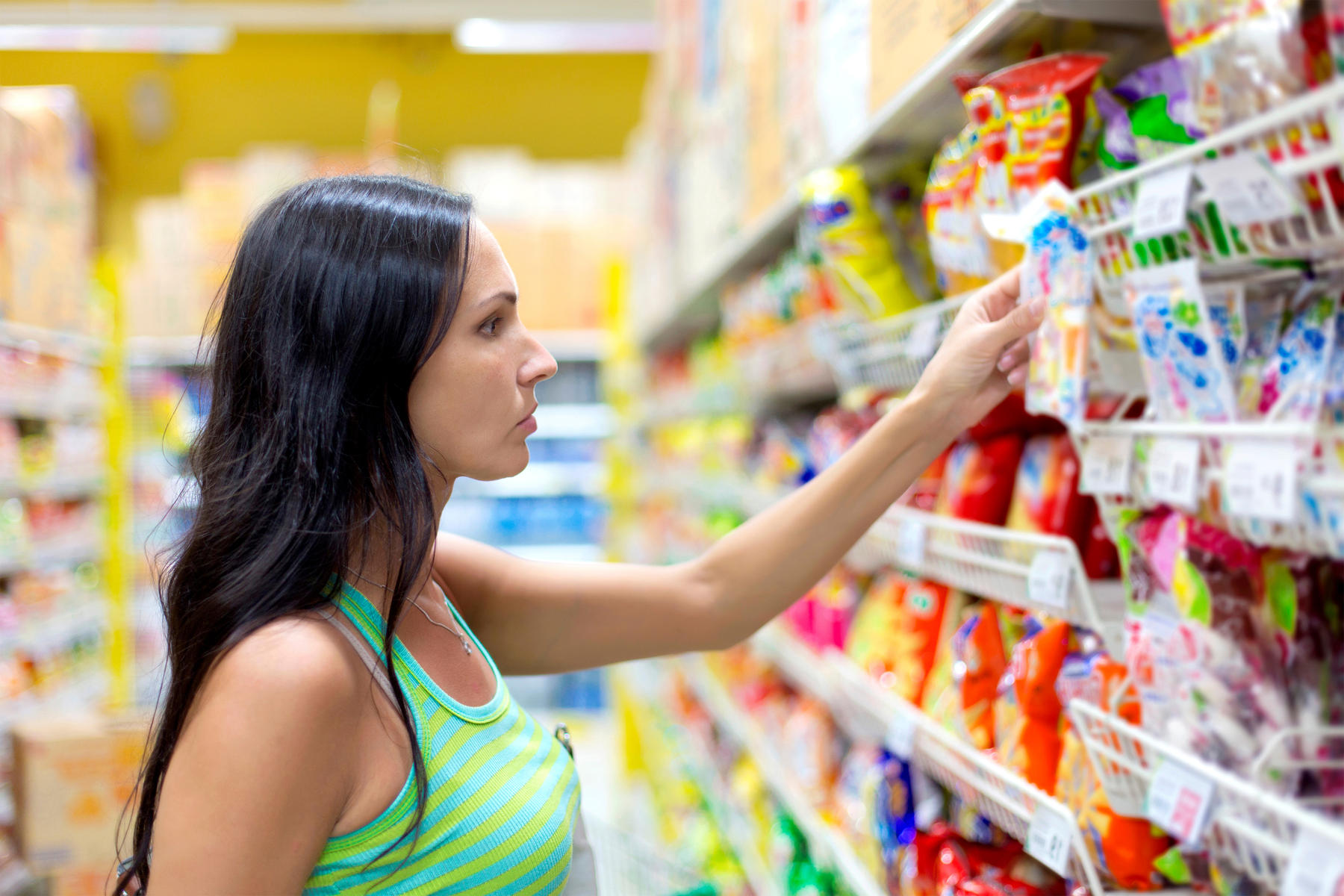
Great news: If you're trying to cut back on sugar for your family, food labels will soon be making that a whole lot easier. The Nutrition Facts Panel on product packaging will finally start listing the amount of added sugar the product contains. That means you'll know exactly how much sugar was put in by manufacturers and how much sugar is naturally occurring. The amount of added sugar will be listed right below "Total Sugars" on the label.
That's going to be hugely helpful when comparing products like yogurt or any product containing fruit. Dairy and fruit both contain natural sugar, and the sugar in plain yogurt or a whole piece of fruit isn't a health concern. It's the extra sugar that's put into products like flavored yogurt, chocolate milk, and fruit drinks that really matters.
The new labels will also list the percent Daily Value for added sugar (the Daily Value is how the product stacks up against the recommended amount—or limit—for the whole day). The Daily Value for added sugar will be based on no more than 10 percent of calories from added sugar, which is what the latest Dietary Guidelines recommend.
Manufacturers are required to list added sugars by July 2018. But that's just one of several tweaks the FDA is making to the food label. Here's what else is changing:
More realistic serving sizes: Serving sizes have always been based on the amounts that people typically eat and drink—but as we know, that amount has changed a lot in recent years. So now a serving of ice cream will be listed as 2/3 cup (up from ½ cup) and a serving of soda will be 12 ounces, up from 8. (The serving size for yogurt will actually decrease from 8 ounces to 6.) If a package holds between 1-2 servings, the product will be required to be labeled as one serving, since most people treat those kinds of individual-sized packages as one serving anyway.
Calories and serving size in bigger font: To put a bigger emphasis on portion size and calories, "Serving Size" and "Calories" will be listed in larger, bolder fonts. "Servings Per Container" will also be larger.
Updated nutrients: Labels will have to list vitamin D and potassium, two nutrients that most Americans don't get enough of. Calcium and iron will stay put on the label. But vitamins A and C aren't mandatory anymore, since deficiencies of those nutrients are very rare.
No more "calories from fat": Since research shows that the type of fat is more important than the amount of fat, this will be removed from the label completely.
Do you read food labels? What do you think of the changes?
Sally Kuzemchak, MS, RD, is a registered dietitian, educator, and mom of two who blogs at Real Mom Nutrition. You can follow her on Facebook Twitter Pinterest, and Instagram. She collaborated with Cooking Light on Dinnertime Survival Guide, a cookbook for busy families. In her spare time, she loads and unloads the dishwasher. Then loads it again.
